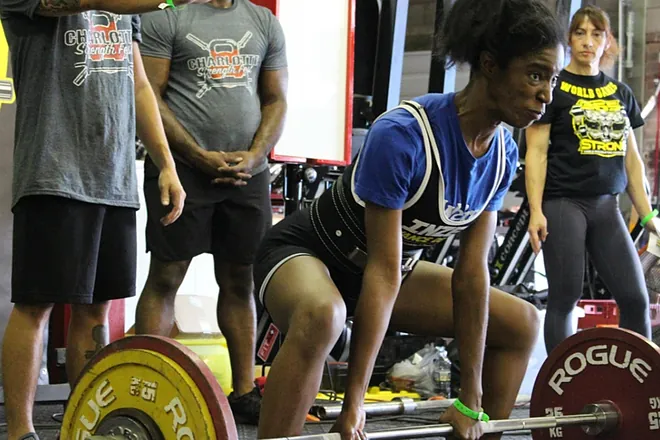Run without losing muscle—it’s the question on every athlete’s mind when they try to balance endurance training with strength goals. Many fitness enthusiasts fear that hitting the track or treadmill will erase hard-earned gains. But the truth is, you can improve cardiovascular fitness, run longer distances, and still maintain muscle mass with the right plan.

Does Running Really Make You Lose Muscle?
The idea that running eats away muscle mass has been around for decades. The logic seems simple: running is a calorie-burning activity, and if you burn too much without fueling properly, your body may break down muscle tissue to use as energy.
This process is known as catabolism—when the body uses protein from muscle fibers for fuel instead of relying on carbohydrates or fats. However, this only happens under specific conditions:
- You are in a prolonged calorie deficit.
- Your diet is low in protein and carbohydrates.
- You train excessively without enough rest and recovery.
For recreational runners or those doing moderate mileage, the risk of muscle loss is minimal—especially if you combine running with strength training and eat a well-balanced diet.
Why Running and Muscle Growth Can Work Together
Contrary to the myth, running can actually complement muscle growth when approached correctly. Here’s why:
- Leg strength improves naturally: Uphill running, sprint intervals, and even steady-state runs engage your quads, hamstrings, and calves.
- Hormonal benefits: Running boosts testosterone and growth hormone when performed at moderate intensity, supporting muscle repair.
- Improved work capacity: A stronger cardiovascular system means you recover faster between heavy lifts and high-intensity gym sessions.
In other words, you can absolutely run without losing muscle, provided you train smart and fuel properly.
How to Run Without Losing Muscle: Core Strategies
Preserving muscle while running comes down to four pillars: strength training, nutrition, recovery, and smart cardio programming.
Strength Training for Runners
Strength training is the insurance policy for your muscles. Without it, the body adapts to running by streamlining mass, especially in the upper body. But with resistance work, you not only protect muscle—you improve running performance.
How often to lift weights:
- Aim for 2–3 strength sessions per week if your main focus is running.
- If muscle preservation or growth is equally important, try a 50/50 split between lifting and running.
Best strength exercises for runners:
- Squats (front and back)
- Deadlifts (conventional or Romanian)
- Walking lunges
- Bulgarian split squats
- Hip thrusts and glute bridges
- Overhead presses and bench presses
- Core stability moves (planks, Pallof press)
These compound movements train multiple muscle groups, improving power and efficiency while reducing injury risk.
Nutrition to Fuel Performance and Muscle Preservation
Your body needs the right fuel to run without losing muscle. A poorly designed diet is often the real culprit behind muscle breakdown.
Macronutrient priorities:
- Protein: Aim for 1.6–2.2 g per kg of body weight daily. Protein supplies the amino acids needed for muscle repair and growth.
- Carbohydrates: Runners need carbs to prevent catabolism. Whole grains, rice, oats, fruits, and starchy vegetables are ideal.
- Fats: Healthy fats from avocados, nuts, olive oil, and fatty fish support hormone production.
Timing matters:
- Pre-run: Eat a meal with carbs and some protein (e.g., oatmeal with Greek yogurt).
- Post-run: Refuel with a protein + carb combo to speed recovery (e.g., chicken and rice, or a protein shake with banana).
The Role of Rest and Recovery
Muscles don’t grow during workouts—they grow when you rest. Overtraining is one of the fastest ways to lose muscle and compromise performance.
Recovery checklist:
- Sleep: 7–9 hours of quality rest per night.
- Rest days: Plan 1–2 full rest days per week, especially during high-mileage phases.
- Active recovery: Walking, yoga, or light cycling keeps blood flowing without stressing muscles.
- Recovery tools: Foam rolling, stretching, and massage help circulation and reduce soreness.
Interval Training for Muscle-Safe Cardio
Not all cardio is equal. Long, slow, high-mileage running may increase the risk of muscle breakdown if nutrition isn’t adequate. But interval training provides the best of both worlds—fat burning and endurance improvement without significant muscle loss.
Example interval workout:
- Warm-up: 5 minutes light jog
- Sprint: 30 seconds at max effort
- Jog recovery: 90 seconds easy pace
- Repeat 8–10 rounds
- Cool down: 5 minutes light jog
Hill sprints, fartlek training, and tempo runs are other powerful tools to build speed and endurance while keeping muscles engaged.
Sample Weekly Training Plan
Here’s a balanced schedule designed to help you run without losing muscle. Adjust volume and intensity based on your fitness level.
| Day | Training Focus | Notes |
|---|---|---|
| Monday | Strength Training (Lower Body) | Squats, deadlifts, lunges |
| Tuesday | Interval Run (30–40 min) | Sprints or hill repeats |
| Wednesday | Strength Training (Upper Body) | Bench press, rows, overhead press |
| Thursday | Easy Run (30–45 min, steady pace) | Keep heart rate moderate |
| Friday | Strength Training (Full Body/Core) | Mix compound lifts + core |
| Saturday | Long Run (60–75 min at easy pace) | Build endurance, not speed |
| Sunday | Rest or Active Recovery | Yoga, walking, or stretching |
Best Foods to Support Muscle While Running
To run without losing muscle, your grocery list should include nutrient-dense, high-protein, and carb-rich foods.
Top choices:
- Lean proteins: chicken, turkey, salmon, eggs, Greek yogurt
- Complex carbs: oats, quinoa, brown rice, sweet potatoes
- Recovery snacks: bananas, protein shakes, peanut butter toast
- Healthy fats: almonds, chia seeds, olive oil, avocado
- Hydration: water, electrolytes, coconut water
Mistakes That Lead to Muscle Loss While Running
Even with the best intentions, many runners sabotage muscle preservation. Avoid these pitfalls:
- Running in a severe calorie deficit
- Skipping strength training sessions
- Ignoring protein intake
- Logging only long, steady runs without intervals
- Training daily with no rest days
Correct these mistakes, and you’ll find running can strengthen your body rather than diminish it.
The fear of losing muscle keeps many lifters from running, but the science is clear: you can run without losing muscle if you train smart. By combining resistance training, eating a nutrient-rich diet, prioritizing recovery, and programming your runs wisely, you’ll unlock endurance and strength at the same time.
Running and muscle growth aren’t enemies—they’re allies when approached with strategy. So lace up, fuel up, and prove the myth wrong.






